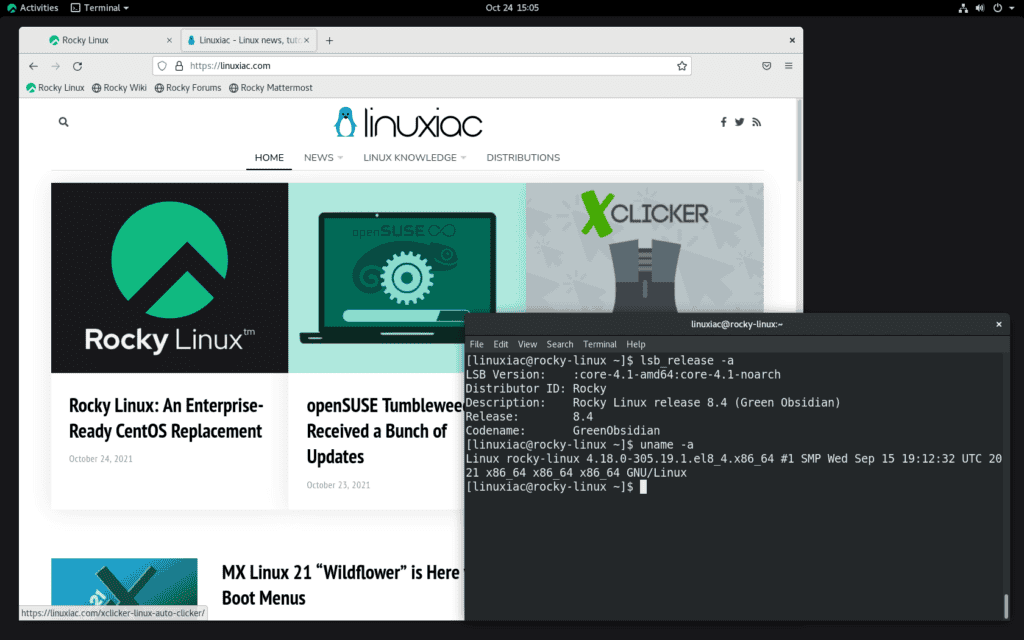The Birth of Rocky Linux
CentOS was a reliable choice for Linux-based servers for a long time because it was effectively a free version of Red Hat Enterprise Linux (RHEL). In addition, CentOS included all the features that made RHEL the dominant enterprise-class Linux.
On December 8, 2020, Red Hat, which had acquired the CentOS project, abruptly announced a change in its focus in the wake of Red Hat’s acquisition by IBM. They announced shifting all of their investment in CentOS Linux from the widespread downstream CentOS distribution.
This move also meant that CentOS would be upstream of RHEL rather than downstream, so CentOS users would be beta testers for RHEL. Since so many users relied on a CentOS version that would be unsupported sooner than they planned, the community sensed a need for a new project.
In response, the original CentOS founder Gregory Kurtzer is leading the effort to create a new version of the distro, to achieve the initial goals of CentOS.
Kurtzer said he had been thinking about creating a new version of CentOS since Red Hat acquired it in 2014.
And then when IBM acquired it, you know, I was thinking about it even more, and then when CentOS was canceled, it seemed pretty clear that this needs to happen.
Gregory M. Kurtzer, Rocky Linux Founder
Confirming his words, Kurtzer wasted no time. Red Hat announced it was shifting focus from downstream build CentOS to upstream build CentOS Stream on December 8, 2020, and the very next day, the Rocky Linux development effort was launched on Github.
Over 650 contributors joined in less than 24 hours.
Why Rocky Linux?
Kurtzer started CAOS Linux, an RPM-based Linux distribution, when Red Hat announced End-of-Life for their Red Hat Linux in favor of subscription-based Red Hat Enterprise Linux (RHEL). Though RHEL was available only through a paid subscription model, the project’s source code was open to the public.
CentOS originated as a build of CAOS Linux, started by Gregory Kurtzer in 2002. One of the volunteers for the project, Rocky McGaugh, a developer of CAOS, volunteered to build a new distribution based on RHEL.
They named it CentOS for “Community Oriented Enterprise Operating System.” Since 2004 CentOS has been a free downstream clone of RHEL.
Thinking back to early CentOS days… My cofounder was Rocky McGaugh. He is no longer with us, so as a H/T to him, who never got to see the success that CentOS came to be, I introduce to you…Rocky Linux.
Gregory M. Kurtzer, Rocky Linux Founder
In short, the name Rocky Linux is a tribute to the late CentOS cofounder Rocky McGaugh.
Rocky Linux
By December 12, 2020, the code repository of Rocky Linux had become the top trending repository on GitHub.
The first release candidate version of Rocky Linux was released on April 30th, 2021. As of June 21, 2021, the generally available (GA) version of Rocky Linux 8.4, codenamed “Green Obsidian,” was released. It attracted 80,000 downloads within the first 72 hours after its official release.

The Rocky Linux installation is similar to CentOS and every Linux installation program. If you’ve installed CentOS before then, this will all look very familiar because it is the same installation process.
Related: CentOS 8 to Rocky Linux 8 Migration: A Step-by-Step Tutorial
Rocky Linux is available for download for both x86_64 and ARM64 systems in various ISO images, including DVD, Minimal, and boot ISO images. The installation program is graphical even though the Minimal image only installs a console-based setup by default.

Because both CentOS and Rocky Linux are based on RHEL, and because stability is the goal, stability means older, tested, and tried software. The distro uses systemd and ships with the XFS file system by default.
DNF (Dandified YUM) is the package manager used by the distribution. It is an upgrade of the now deprecated YUM package manager, which was the package manager for older versions of Red Hat Linux distributions such as RedHat and CentOS 7.
There is a symlink for yum to dnf in Rocky Linux, so you can still use the yum command since dnf uses most of the same command syntax.
To learn more about Rocky Linux distribution, you can visit the project’s website.
Bottom Line
Rocky Linux appears to be gaining acceptance at a rapid pace. It has a good chance of becoming a widely used Linux distribution. Big names are keen to be associated with it too.
Google Cloud, Amazon Web Services, and Microsoft Azure are some companies sponsoring Rocky Linux. So, the future looks more promising than ever.
In conclusion, if you rely on CentOS and don’t want to run CentOS Stream or pay for RHEL, you could consider Rocky Linux. Then, you’ll have a solid foundation for your server.

With the fate of Red Hat Linux now officially doomed under the control of IBM, now would actually be the time to simply switch to the Debian ecosystem (including its derivatives such as ubuntu) instead of continuing to find workarounds.
Debian is not so well. I was using it for years in parallel with CentOS. Debian is too much in late for packages, doesn’t respect standards (e.g apache is not a webserver, it’s httpd. And the bad use of “sites-enabled” in contrast of all others distributions…). And .deb packages are not well tested at build time while rpmbuild is way more ensuring. Debian hasn’t a good iptables overlay like we have with firewalld and nftables (very important for containers). And there is no good support of podman. Debian is a nice distribution but I don’t recommend using it for strong and up to date production server.